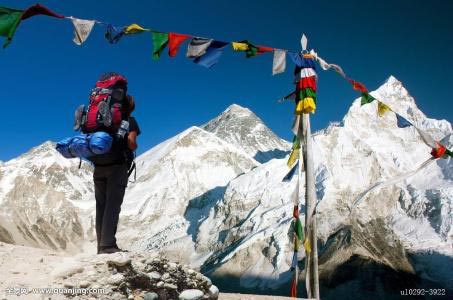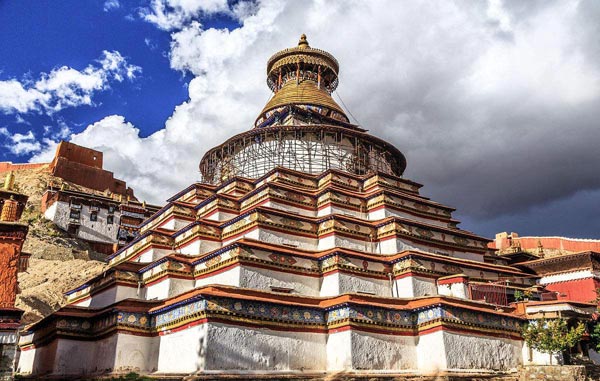Tibet Guide
BackThis article is about ethno-cultural Tibet. For the administrative region of China, see Tibet Autonomous Region. For the Tibetan Government-in-Exile in India, see Central Tibetan Administration. For the empire (7th–9th century), see Tibetan Empire. For other uses, see Tibet (disambiguation).
Tibet is a region on the Tibetan Plateau in China, Asia. It is the traditional homeland of the Tibetan people as well as some other ethnic groups such as Monpa, Qiang and Lhoba peoples and is now also inhabited by considerable numbers of Han Chinese and Hui people. Tibet is the highest region on Earth, with an average elevation of 4,900 metres (16,000 ft). The highest elevation in Tibet is Mount Everest, earth's highest mountain rising 8,848 m (29,029 ft) above sea level.
The Tibetan Empire emerged in the 7th century, but with the fall of the empire the region soon divided into a variety of territories. The bulk of western and central Tibet (ü-Tsang) was often at least nominally unified under a series of Tibetan governments in Lhasa, Shigatse, or nearby locations; these governments were at various times under Mongol and Chinese overlordship. The eastern regions of Kham and Amdo often maintained a more decentralized indigenous political structure, being divided among a number of small principalities and tribal groups, while also often falling more directly under Chinese rule after the Battle of Chamdo; most of this area was eventually incorporated into the Chinese provinces of Sichuan and Qinghai. The current borders of Tibet were generally established in the 18th century.
Following the Xinhai Revolution against the Qing dynasty in 1912, Qing soldiers were disarmed and escorted out of Tibet Area (ü-Tsang). The region subsequently declared its independence in 1913 without recognition by the subsequent Chinese Republican government. Later, Lhasa took control of the western part of Xikang, China. The region maintained its autonomy until 1951 when, following the Battle of Chamdo, Tibet became incorporated into the People's Republic of China, and the previous Tibetan government was abolished in 1959 after a failed uprising. Today, China governs western and central Tibet as the Tibet Autonomous Region while the eastern areas are now mostly ethnic autonomous prefectureswithin Sichuan, Qinghai and other neighbouring provinces. There are tensions regarding Tibet's political status and dissident groups that are active in exile. It is also said that Tibetan activists in Tibet have been arrested or tortured.
T
he economy of Tibet is dominated by subsistence agriculture, though tourism has become a growing industry in recent decades. The dominant religion in Tibet is Tibetan Buddhism; in addition there is Bön, which is similar to Tibetan Buddhism, and there are also Tibetan Muslims and Christian minorities. Tibetan Buddhism is a primary influence on the art,music, and festivals of the region. Tibetan architecture reflects Chinese and Indian influences. Staple foods in Tibet are roasted barley, yak meat, and butter tea.
Geography
All of modern China, including Tibet, is considered a part of East Asia. Historically, some European sources also considered parts of Tibet to lie in Central Asia. Tibet is west of the Central China plain, and within mainland China Tibet is regarded as part of 西部 (Xībù), a term usually translated by Chinese media as 'the Western section', meaning 'Western China'.
Tibet has some of the world's tallest mountains, with several of them making the top ten list. Mount Everest, located on the border with Nepal, is, at 8,848 metres (29,029 ft), the highest mountainon earth. Several major rivers have their source in the Tibetan Plateau (mostly in present-day Qinghai Province). These include the Yangtze, Yellow River, Indus River, Mekong, Ganges, Salween and the Yarlung Tsangpo River (Brahmaputra River). The Yarlung Tsangpo Grand Canyon, along the Yarlung Tsangpo River, is among the deepest and longest canyons in the world.
Tibet has been called the 'Water Tower' of Asia, and China is investing heavily in water projects in Tibet.
The Indus and Brahmaputra rivers originate from a lake (Tib: Tso Mapham) in Western Tibet, near Mount Kailash. The mountain is a holy pilgrimage site for both Hindus and Tibetans. The Hindus consider the mountain to be the abode of Lord Shiva. The Tibetan name for Mt. Kailash is Khang Rinpoche. Tibet has numerous high-altitude lakes referred to in Tibetan as tso or co. These includeQinghai Lake, Lake Manasarovar, Namtso, Pangong Tso, Yamdrok Lake, Siling Co, Lhamo La-tso, Lumajangdong Co, Lake Puma Yumco, Lake Paiku, Lake Rakshastal, Dagze Co and Dong Co. The Qinghai Lake (Koko Nor) is the largest lake in the People's Republic of China.
The atmosphere is severely dry nine months of the year, and average annual snowfall is only 18 inches (46 cm), due to the rain shadow effect. Western passes receive small amounts of fresh snow each year but remain traversible all year round. Low temperatures are prevalent throughout these western regions, where bleak desolation is unrelieved by any vegetation bigger than a low bush, and where wind sweeps unchecked across vast expanses of arid plain. The Indian monsoon exerts some influence on eastern Tibet. Northern Tibet is subject to high temperatures in the summer and intense cold in the winter.
Cultural Tibet consists of several regions. These include Amdo (A mdo) in the northeast, which is administratively part of the provinces of Qinghai, Gansu and Sichuan. Kham (Khams) in the southeast encompasses parts of western Sichuan, northern Yunnan, southern Qinghai and the eastern part of the Tibet Autonomous Region. ü-Tsang (dBus gTsang) (ü in the center, Tsang in the center-west, and Ngari (mNga' ris) in the far west) covered the central and western portion of Tibet Autonomous Region.
Tibetan cultural influences extend to the neighboring states of Bhutan, Nepal, regions of India such as Sikkim, Ladakh, Lahaul, and Spiti, in addition to designated Tibetan autonomous areas in adjacent Chinese provinces.
Culture
Tibetan Buddhism
Buddhist monks in DrepungMonastery
Religion is extremely important to the Tibetans and has a strong influence over all aspects of their lives. Bön is the ancient religion of Tibet, but has been almost eclipsed by Tibetan Buddhism, a distinctive form of Mahayana and Vajrayana, which was introduced into Tibet from the Sanskrit Buddhist tradition of northern India. Tibetan Buddhism is practiced not only in Tibet but also inMongolia, parts of northern India, the Buryat Republic, the Tuva Republic, and in the Republic of Kalmykia and some other parts of China. During China's Cultural Revolution, nearly all Tibet's monasteries were ransacked and destroyed by the Red Guards. A few monasteries have begun to rebuild since the 1980s (with limited support from the Chinese government) and greater religious freedom has been granted – although it is still limited. Monks returned to monasteries across Tibet and monastic education resumed even though the number of monks imposed is strictly limited. Before the 1950s, between 10 and 20% of males in Tibet were monks.
Tibetan Buddhism has four main traditions (the suffix pa is comparable to 'er' in English):
Gelug(pa), Way of Virtue, also known casually as Yellow Hat, whose spiritual head is the Ganden Tripa and whose temporal head is the Dalai Lama. Successive Dalai Lamas ruled Tibet from the mid-17th to mid-20th centuries. This order was founded in the 14th to 15th centuries by Je Tsongkhapa, based on the foundations of the Kadampa tradition. Tsongkhapa was renowned for both his scholasticism and his virtue. The Dalai Lama belongs to the Gelugpa school, and is regarded as the embodiment of the Bodhisattva of Compassion.
Kagyu(pa), Oral Lineage. This contains one major subsect and one minor subsect. The first, the Dagpo Kagyu, encompasses those Kagyu schools that trace back to Gampopa. In turn, the Dagpo Kagyu consists of four major sub-sects: the Karma Kagyu, headed by a Karmapa, the Tsalpa Kagyu, the Barom Kagyu, and Pagtru Kagyu. The once-obscure Shangpa Kagyu, which was famously represented by the 20th-century teacher Kalu Rinpoche, traces its history back to the Indian master Niguma, sister of Kagyu lineage holder Naropa. This is an oral tradition which is very much concerned with the experiential dimension of meditation. Its most famous exponent was Milarepa, an 11th-century mystic.
Nyingma(pa), The Ancient Ones. This is the oldest, the original order founded by Padmasambhava.
Sakya(pa), Grey Earth, headed by the Sakya Trizin, founded by Khon Konchog Gyalpo, a disciple of the great translator Drokmi Lotsawa. Sakya Pandita 1182–1251 CE was the great grandson of Khon Konchog Gyalpo. This school emphasizes scholarship.
Top Tibetan Attractions

4 Days Lhasa City Tour
start in:Lhasa end in:Lhasa
Destination: Drepung Monastery, Sera Monastery,Potala Palace, Jokhang Temple, Barkhor Street



